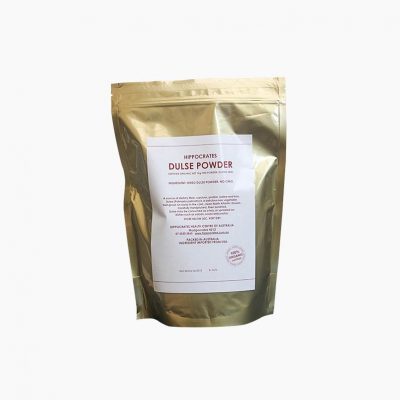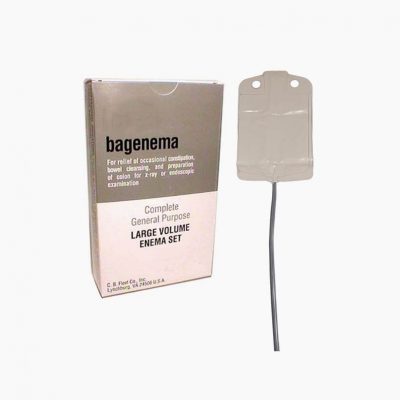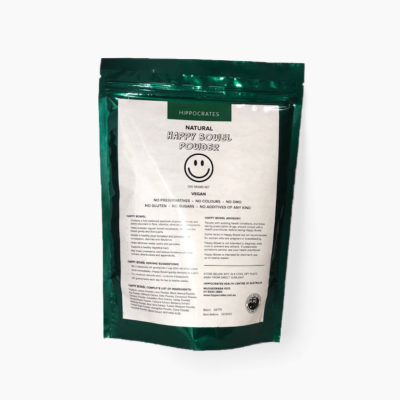Keeping your colon and rectum clean and healthy provides a number of health benefits:
- A lowered risk of developing colorectal cancer, which is prevalent in industrialized countries.
- A lowered risk of irritable bowel syndrome, chronic constipation, and chronic diarrhea.
- A lowered risk of developing hemorrhoids.
- Less foul gas production.
- More efficient absorption of water and minerals.
- A feeling of lightness, comfort, and wellbeing in your abdominal region.
Your colon and rectum are collectively referred to as your large intestine, which is the last part of your digestive tract.
After food passes through your stomach and small intestine, the remaining material, mostly waste products in liquid form, move on to the first part of your large intestine — your colon.
Your colon is approximately 2m long and serves primarily to dehydrate liquid waste material.
Your colon begins at the lower right hand corner of the abdomen, where it is called the cecum. Attached to your cecum is a twisted, worm-shaped tube called the appendix.
From your cecum, your colon travels up the right side of your abdomen, where it is called the ascending colon. When it reaches your lower right ribs (just below your liver), it turns to travel across your abdomen to just below your lower left ribs; here, it’s called the transverse colon.
Just below your lower left ribs, it makes another turn and travels down the left side of your abdomen — this portion is called the descending colon.
Your colon then makes one last turn toward the middle of your abdomen, forming an “S” shaped segment that is called the sigmoid colon.
Your sigmoid colon empties waste materials into your rectum, which is like a storage pouch that holds onto your feces until contractions in your large intestine stimulate a bowel movement.
After you eat a substantial meal, your stomach expands enough to trigger a reflex that causes a contractile wave (called a peristaltic wave) to travel through your small intestine and push any liquid waste material (chyme) that is sitting in the last part of your small intestine into your large intestine.
Once enough liquid waste material accumulates in your cecum (the first part of your large intestine), the waste material begins to move up your ascending colon.
Movement of waste material through your colon is facilitated by something called “haustral churning”. Your colon is divided along its length into small pouches called haustra. When a haustrum is filled with substantial waste material, its muscular walls contract and push the waste material into the next haustrum. The contractile reflex that allows haustral churning is regulated by your enteric nervous system, which is a division of your autonomic nervous system.
On average, your colon experiences three to twelve moderate waves of contractions every minute. After every substantial meal, your colon experiences a much larger contractile wave, called “mass peristalsis”. Mass peristalsis serves to push waste materials from your transverse colon all the way to your rectum. In most people, mass peristalsis occurs about three times a day.
Water and Nutrient Absorption
The mucosal lining of your large intestine is lined with tiny pits that open into long, tube-like intestinal glands; these glands are lined with specialized cells that absorb water, and other specialized cells (goblet cells) that release mucous into your large intestine to lubricate your stools and to protect the lining of your large intestine against acidic substances and noxious gases.
The specialized cells that absorb water from your waste materials are responsible for about 10% of the water that you absorb from the foods and beverages that you ingest; the remaining 90% is absorbed by cells that line your small intestine.
This 10% of water absorption in your large intestine amounts to between 500ML and 1L of water in most people, and represents a significant portion of your body’s daily intake of water. As water is absorbed from the waste material in your colon, so are some nutrients, mainly minerals.
Three to ten hours are required for your large intestine to absorb enough water from waste material to turn the waste into solid or partially solid stools. Your stools consist mainly of water, mucous, fiber, old cells from your intestinal lining, millions of microorganisms, and small amounts of inorganic salts.
When your rectal pouch is distended with enough feces to trigger a contractile reflex, your feces are pushed out through your anus. When you consciously contract your abdominal wall, your diaphragm moves downward and helps open muscles that line your anal sphincter.
Your rectum is lined with three horizontal folds, called your rectal valves; these valves are what prevent stools from passing through your anal sphincter when you pass gas.
If you choose not to release stools when you experience an urge to do so, your reflex contractions may stop, in which case you likely won’t have a significant bowel movement until the next mass peristalsis occurs.
When waste material travels through your digestive tract too quickly for sufficient water absorption to occur, your stools will be runny and more frequent than normal.
Three common causes of diarrhea are:
- Undesirable microorganisms
- Food intolerances (such as lactose intolerance)
- Stress
In the first two cases listed above, it makes sense that your body would want things to move quickly through your system; your body doesn’t want to spend time digesting foods that it cannot properly extract nutrients from or that are laced with disease-causing microbes.
Stress can cause transit time to shorten by affecting your enteric nervous system. (Please recall that your enteric nervous system controls the reflex contractions that mark “haustral churning”.) Your enteric nervous system is part of your autonomic nervous system, and your autonomic nervous system regulates your physiological responses to emotional and physical stress.
When waste material travels through your colon more slowly than it should, so much water is sucked out of your waste material that your stools become hard.
Common causes of constipation are:
- Not evacuating when you feel an urge to evacuate.
- Lack of a healthy intestinal lining; a lining capable of producing enough mucous to properly lubricate your stools.
- Insufficient intake of water, water-rich foods, and/or fiber-rich foods.
- Stress.
Chronic constipation is the single greatest cause of having an unclean and unhealthy colorectal region because over time, constipation causes your bowel walls to endure excessive pressure — pressure that is created by you straining to evacuate, and by your colon walls creating stronger contractions to help eliminate hard stools.
Excessive pressure on your colon walls can cause small pouches called diverticuli to form. Sometimes, small bits of waste material can become lodged in diverticuli.
Every time you eat a substantial meal, you stimulate stretch receptors in your stomach that are responsible for triggering normal and mass peristaltic waves throughout your small and large intestines, ensuring regular movement of waste material through your colon and rectum.
Also, eating substantial meals allows significant “chunks” of waste materials to travel together through your colon, turn into well-formed stools, and be eliminated from your body in an efficient manner.
If you regularly suppress the urge to have a bowel movement, waste materials spend more time than is optimal in your colon, causing excessive dehydration of waste materials and formation of hard stools.
Water helps to move waste materials along, and is absorbed throughout the entire length of your colon. Insufficient water intake can cause stools to form long before waste materials reach your rectal pouch, which can cause constipation.
Fiber adds bulk to the boluses of waste material that travel through your large intestine, and this bulk is essential to your colon’s ability to turn waste materials into well-formed stools.
A diet that is rich in raw vegetables, fruits and legumes ensures high fiber intake.
Adequate vitamin D intake significantly lowers your risk of developing all types of cancer, including colorectal cancer.
When you aren’t able to get regular exposure to sunlight (enough to tan without burning), look to ensure adequate vitamin D status by taking vitamin D in capsules.
As mentioned above, glands that line the mucosal lining of your colon are responsible for releasing mucous that is needed to lubricate your feces.
All of your cells, including those of your large intestine and nervous system, require a constant influx of undamaged fatty acids and cholesterol to remain fully functional. If you don’t ensure adequate intake of healthy fats (such as found in avocados and coconuts), your nervous system and the smooth muscles that surround your digestive passageway — both of which are responsible for creating peristaltic waves throughout your digestive tract — may deteriorate in function.
Large populations of friendly bacteria can keep your digestive tract clean and healthy by:
- Promoting optimal digestion, thereby preventing buildup of toxic waste materials.
- Utilizing space and resources, thereby helping to prevent infection by harmful bacteria, fungi, and parasites.
The easiest way to build and maintain healthy colonies of friendly bacteria in your digestive tract is to take in high quality probiotics, such as found in fermented foods.
Your body is designed to keep your colon and rectal regions clean and healthy. If you follow the steps outlined above, you can rest assured knowing that your lifestyle choices are minimizing your risk of having colon-related health issues.
The Bagenema is a wonderful tool for cleansing your colon in the privacy of your home.





